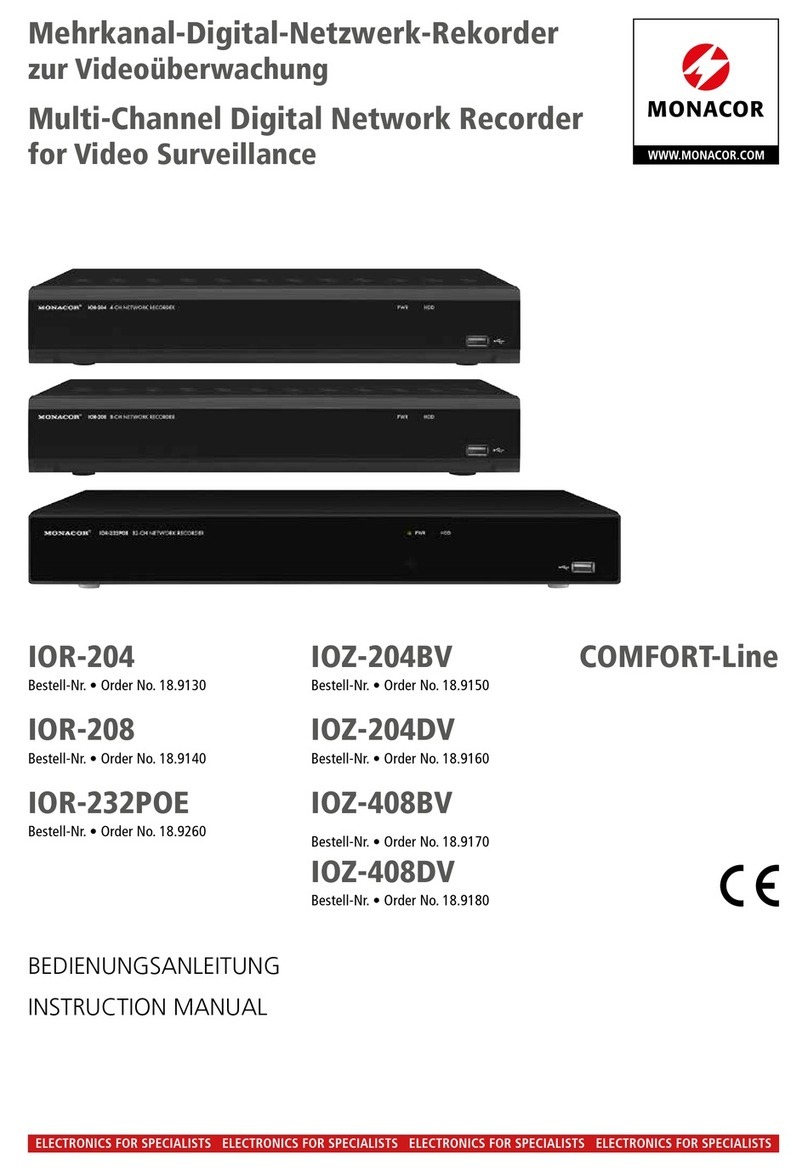5
Deutsch
3 Hinweise für den
sicherenGebrauch
Das Modul entspricht allen relevanten Richtlinien
der EU und trägt deshalb das -Zeichen.
•
Verwenden Sie das Modul nur im Innenbereich
und schützen Sie es vor Tropf- und Spritzwasser
sowie vor hoher Luftfeuchtigkeit. Der zulässige
Einsatztemperaturbereich beträgt 0–40°C.
•
Nehmen Sie das Gerät mit dem eingebauten
Modul nicht in Betrieb, wenn:
1. sichtbare Schäden am Modul oder am Gerät
vorhanden sind,
2.
nach einem Sturz oder Ähnlichem der Ver-
dacht auf einen Defekt besteht,
3. Funktionsstörungen auftreten.
Geben Sie das Modul oder das komplette
Gerät in jedem Fall zur Reparatur in eine Fach-
werkstatt.
•
Verwenden Sie zum Säubern nur ein weiches,
trockenes Tuch, auf keinen Fall Chemikalien
oder Wasser.
•
Wird das Modul zweckentfremdet, nicht fach-
gerecht eingebaut, falsch bedient oder nicht
fachgerecht repariert, kann keine Garantie für
das Gerät und keine Haftung für daraus resul-
tierende Sach- oder Personenschäden übernom-
men werden.
Soll das Modul endgültig aus dem Be-
trieb genommen werden, übergeben
Sie es zur umweltgerechten Entsorgung
einem örtlichen Recyclingbetrieb.
4 Einbau des Moduls
WARNUNG Das Modul darf nur von einer qua-
lifizierten Fachkraft eingebaut wer-
den. Es besteht die Gefahr eines
elektrischen Schlages.
1)
Das Gerät, in welches das Modul eingebaut
werden soll (ELA-Verstärker/Erweiterungs-
gerät), von der Stromversorgung trennen und
den Gehäusedeckel des Gerätes abschrauben.
2)
Auf der Frontseite des Verstärkers/Erweite-
rungsgerätes die Abdeckblende für den Modul-
schacht abschrauben. Das Modul dort einset-
zen und festschrauben.
3) Über den 3-poligen Anschluss CONIN OUT (an
der hinteren Kante) erhält das Modul seine
Betriebsspannung (17V) und wird das Audio-
signal zum Verstärker geleitet. Die freiliegende
dreipolige Leitung des Verstärkers/Erweite-
rungsgerätes in diesen Anschluss stecken.
4)
Zur Montage der beiliegenden Antennen-
buchse auf der Rückseite des Verstärkers/Er-
weiterungsgerätes das Abdeckblech „ANT.
Terminal“ heraustrennen. Die Antennenbuchse
in die Öffnung einsetzen und festschrauben.
ANT
ANT. Terminal
(option)
AM GND 300 Ω
FM 75 Ω
5)
Die Leitung der eingesetzten Antennenbuchse
in den 5-poligen Anschluss ANT1 des Moduls
stecken.
6)
Das Gerät, in welches das Modul eingebaut
wurde, mit dem Gehäusedeckel wieder ver-
schließen. An die Antennenbuchse die Emp-
fangsantenne anschließen. Eine einfache Wurf-
antenne liegt dem Modul bei.
Sollen sowohl eine UKW- als auch eine
Mittelwellenantenne angeschlossen werden,
die Antennen über eine Antennenweiche an
die Buchse ANT anschließen.
5 Bedienung
1)
Das Gerät, in dem das Modul eingebaut ist,
einschalten. Das Modul mit der Taste /ein-
schalten.
2) Zum Umschalten zwischen Radio und Audio-
spieler die Taste MODE drücken.
3)
Die gewünschte Lautstärke mit dem Regler
LEVEL einstellen.
4) Zum Ausschalten die Taste /so lange drü-
cken, bis das Display erlischt. Oder das Gerät
ausschalten, in dem das Modul eingebaut ist.
Beim nächsten Einschalten sind alle ge-
wählten Funktionen wieder aktiviert.
5.1 Bedienung des Audiospielers
Zum Abspielen von MP3- oder WMA-Dateien in
die USB-Buchse einen USB-Speicherstick stecken
oder an die USB-Buchse eine USB-Festplatte mit
eigener Stromversorgung anschließen. Mit einem
entsprechenden USB-Adapter können auch Spei-
cherkarten (SD, SDHC) verwendet werden.
Hinweis: Aufgrund der Vielfalt von Speicher-Herstellern
und Gerätetreibern kann nicht garantiert werden, dass alle
Speichermedien mit dem PA-1200RDSU kompatibel sind.
































